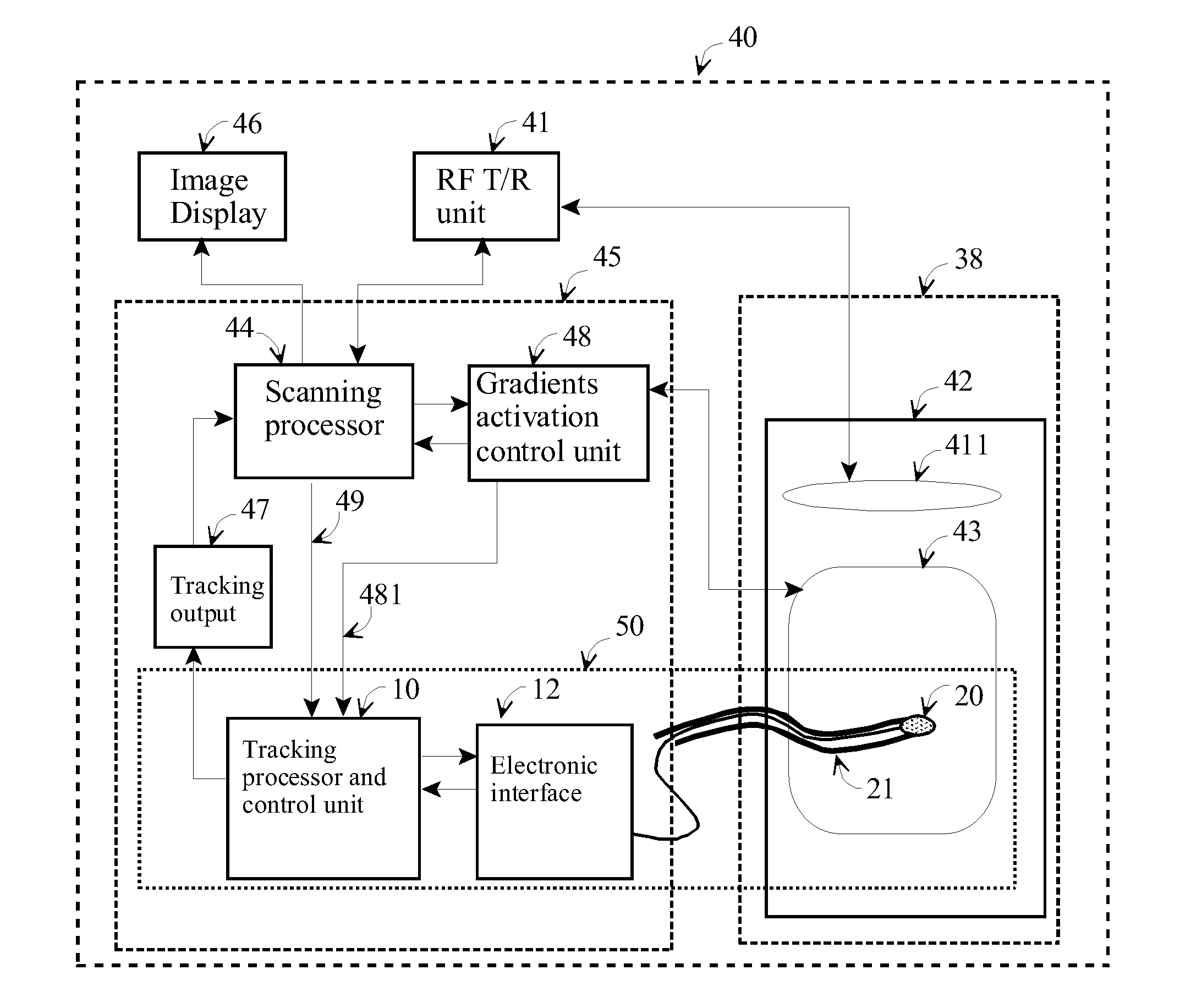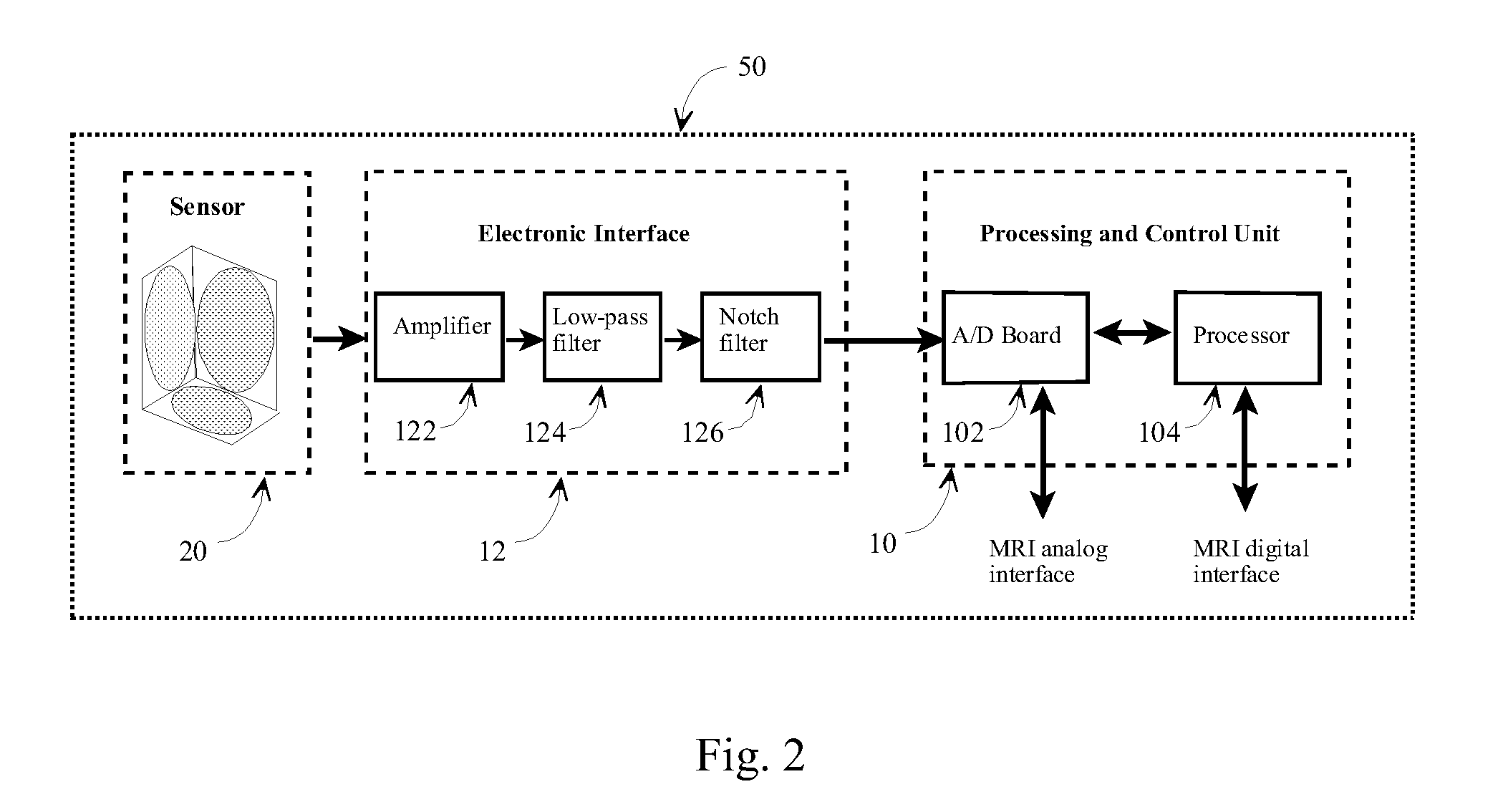Method and apparatus to estimate location and orientation of objects during magnetic resonance imaging
a magnetic resonance imaging and location estimation technology, applied in the field of methodology and equipment, can solve the problems of inability to directly use the methodology, inability to estimate the location and orientation of objects during magnetic resonance imaging, and inability to accurately estimate the location and orientation of objects, etc., and achieve the effect of limited accuracy of orientation estimation and accurate orientation
- Summary
- Abstract
- Description
- Claims
- Application Information
AI Technical Summary
Benefits of technology
Problems solved by technology
Method used
Image
Examples
Embodiment Construction
[0040]Tracking based on the gradient fields of magnetic resonance imaging (MRI) scanners is disclosed in U.S. Pat. No. 6,516,213 by Nevo. This technology is based on passive operation of the tracking system without any change of the scanner's hardware or mode of operation. To achieve better tracking performance, a technique to create a custom MRI pulse sequence is disclosed. Through this technique any standard pulse sequence of the scanner can be modified to include gradient activations specifically designated for tracking. These tracking gradient activations are added in a way that does not affect the image quality of the native sequence. The scan time may remain the same as with the native sequence or longer due to the additional gradient activations. The tracking system itself can use all the gradient activations (gradient activations for imaging and gradient activations for tracking) or eliminate some of the gradients and lock onto the specific gradient activations that are adde...
PUM
 Login to View More
Login to View More Abstract
Description
Claims
Application Information
 Login to View More
Login to View More - R&D
- Intellectual Property
- Life Sciences
- Materials
- Tech Scout
- Unparalleled Data Quality
- Higher Quality Content
- 60% Fewer Hallucinations
Browse by: Latest US Patents, China's latest patents, Technical Efficacy Thesaurus, Application Domain, Technology Topic, Popular Technical Reports.
© 2025 PatSnap. All rights reserved.Legal|Privacy policy|Modern Slavery Act Transparency Statement|Sitemap|About US| Contact US: help@patsnap.com



